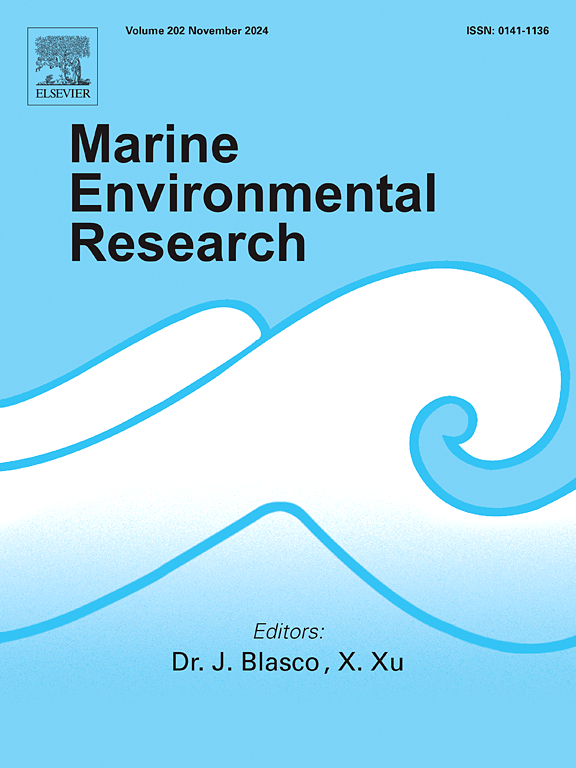Unprecedented warming impacts on phytoplankton and special emphasis on diatom-diazotroph associations in the oligotrophic waters of the Eastern Arabian sea
IF 3
3区 环境科学与生态学
Q2 ENVIRONMENTAL SCIENCES
引用次数: 0
Abstract
The impact of anomalous warming on the phytoplankton dynamics in the euphotic zone (0–60 m depth) of the eastern Arabian Sea (EAS) during the southwest monsoon (SWM–2020) was investigated along the 68°E transect from 8°N to 21°N. During SWM–2020, sea surface temperatures (SSTs) along the transect exceeded 28 °C, with temperatures of ∼29–30 °C recorded in the North of the Findlater Jet Axis (NFJA). The active Findlater Jet (FJ) modulated the thermocline, causing shallower thermocline in the North EAS (NEAS, 16–21°N) and deeper thermocline in the South EAS (SEAS, 8–15°N). The increased stratification due to warming reduced the vertical mixing and exacerbated the oligotrophic condition within the MLDs in the NEAS. High dissolved inorganic silicate and phosphorous with low nitrate concentrations favouring dinoflagellates and diatom-diazotroph associations (DDAs) within the MLDs, particularly in the NEAS. In the NEAS, heterocystous cyanobacteria Richelia was abundant as free-living and in endosymbiosis with Rhizosolenia and Hemiaulus, while coccoid cells of Crocosphaera, symbiotic with Climacodium sp., thrived in both SEAS and NEAS indicating a critical role of dissolved iron in distribution of DDAs. DDAs were abundant in subsurface waters (25–40 m) and rare or absent within the nutricline and subsurface chlorophyll maximum (SCM, 40–60 m depths). High dissolved ammonium concentration in the NEAS indicated that N2 fixed by DDAs could be supplied into N-limited waters. A high abundance of unhealthy and moribund host-symbiotic stages suggests extreme warming, and shallower nitracline could harm DDAs in the EAS. This study highlights the importance of DDAs in the EAS, which remains poorly understood, and whose underestimation in N2 and C fixation can impact the regional nitrogen and carbon budgets.
求助全文
约1分钟内获得全文
求助全文
来源期刊

Marine environmental research
环境科学-毒理学
CiteScore
5.90
自引率
3.00%
发文量
217
审稿时长
46 days
期刊介绍:
Marine Environmental Research publishes original research papers on chemical, physical, and biological interactions in the oceans and coastal waters. The journal serves as a forum for new information on biology, chemistry, and toxicology and syntheses that advance understanding of marine environmental processes.
Submission of multidisciplinary studies is encouraged. Studies that utilize experimental approaches to clarify the roles of anthropogenic and natural causes of changes in marine ecosystems are especially welcome, as are those studies that represent new developments of a theoretical or conceptual aspect of marine science. All papers published in this journal are reviewed by qualified peers prior to acceptance and publication. Examples of topics considered to be appropriate for the journal include, but are not limited to, the following:
– The extent, persistence, and consequences of change and the recovery from such change in natural marine systems
– The biochemical, physiological, and ecological consequences of contaminants to marine organisms and ecosystems
– The biogeochemistry of naturally occurring and anthropogenic substances
– Models that describe and predict the above processes
– Monitoring studies, to the extent that their results provide new information on functional processes
– Methodological papers describing improved quantitative techniques for the marine sciences.
 求助内容:
求助内容: 应助结果提醒方式:
应助结果提醒方式:


